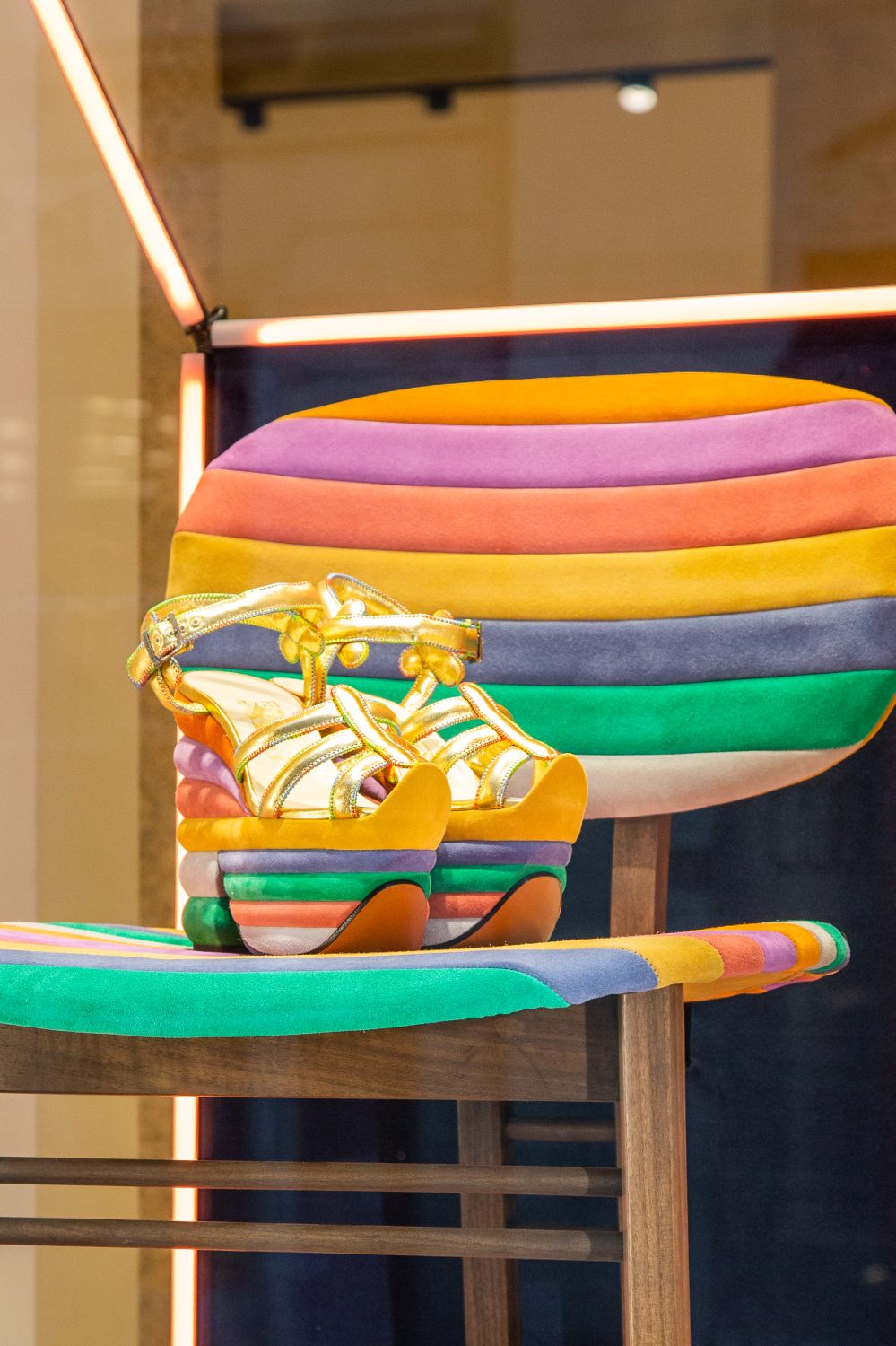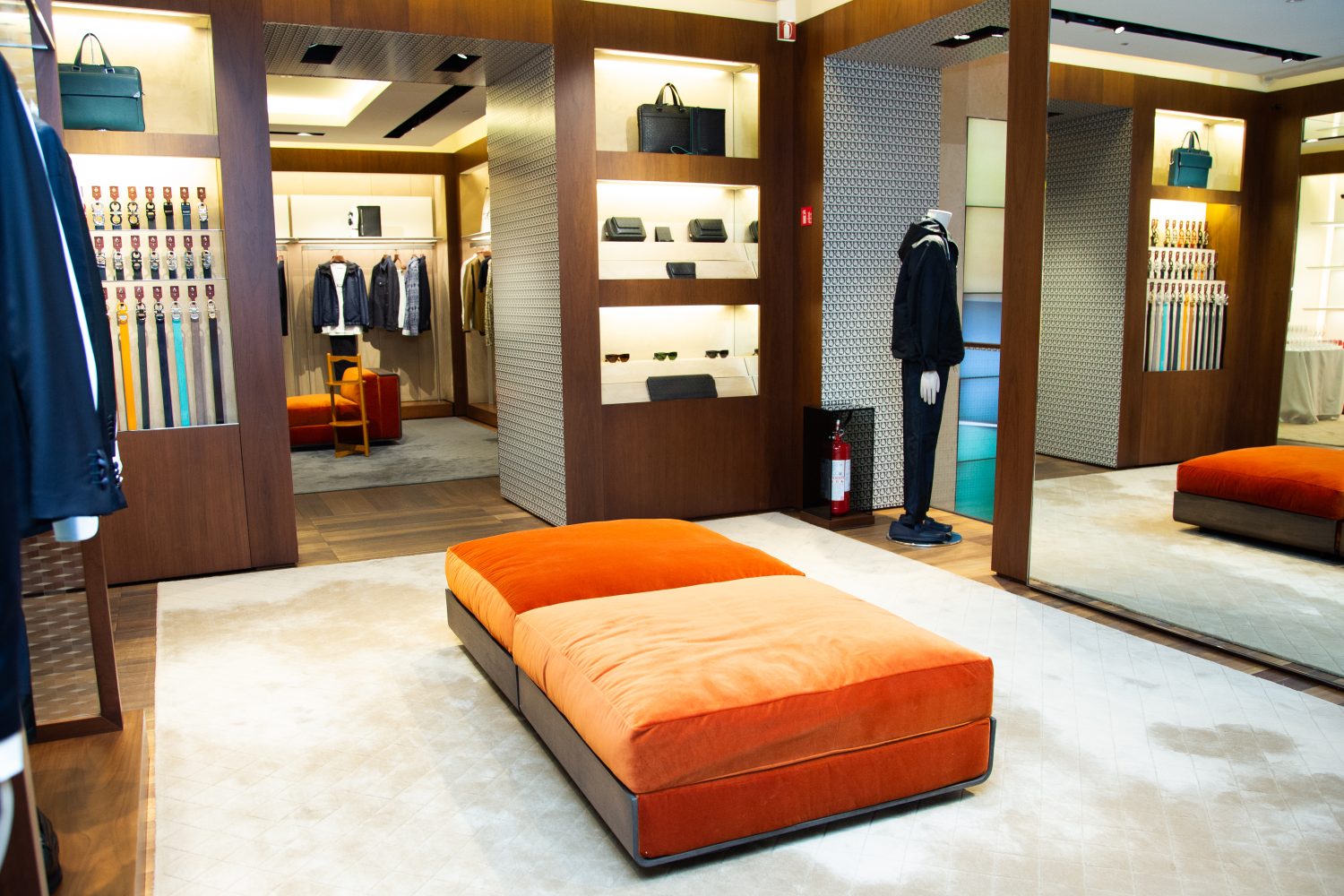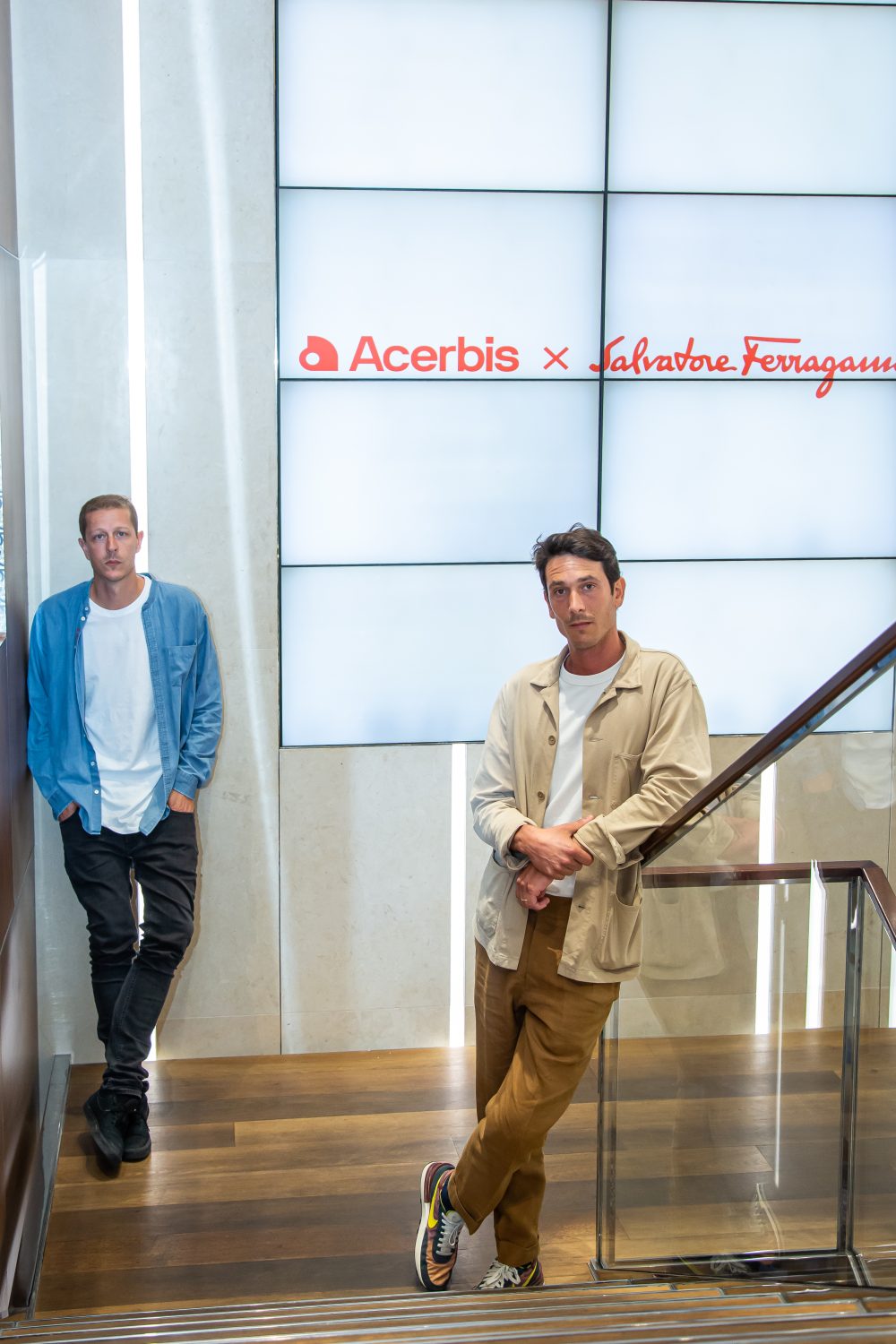Francesco Meda and David Lopez Quincoces
About timeless design
“We have to give the right credit and value to what is timeless.”
One could call it, a visual narrative of the Italian spirit. For the first time, two forces of Italian design Acerbis and Salvatore Ferragamo unite to write a new wonderful story, all Made in Italy. The windows of the Ferragamo Donna and Uomo boutiques on Via Montenapoleone become the stage for a series of compositions made with pieces from the Remasters collection, from the Acerbis archive, but re-edited by iconic duo, Francesco Meda and David Lopez Quincoces. A new creative union is born, coming from the archives looking to the future.
We are having this interview inside the Ferragamo shop in Via Montenapoleone. Why?
Francesco Meda: We are here because Ferragamo reached out to us and was interested in collaborating with Acerbis. For this collab, we started to think about what our two brands have in common. For us, it’s heritage and the talents who gravitate around it. In the last two years, a lot of things changed at Acerbis, they did a big relaunch. And what we, as art directors, are trying to do is to recreate a creative community that is very reminiscent of what Acerbis had in its golden years. Because at the time Acerbis had not only great designers creating for the brand, but also great artists as Nanda Vigo, Gianfranco Frattini, Vico Magistretti, and photographers such as Aldo Ballo. And Salvatore Ferragamo too, he was always surrounded with artists and Hollywood divas. So we are trying to build a similar creative community around our brand. Ferragamo really grasped this new energy and creativity that gravitates around the company. You can feel it in the air. So for this collaboration, we decided to create a dialogue between these two brands. For example, we have reinterpreted the iconic chair designed by Giotto Stoppino and Ludovico Acerbis with colored leather lines that echo the Rainbow 1938 sandal that Salvatore Ferragamo designed for Judy Garland. It’s something very new for the design sector: but we wanted to explore new approaches.

What is the surplus value you have brought to Acerbis, a benchmark for Italian design lovers?
David Lopez Quincoces: In this first stage of the relaunch, we decided to focus on what is the company’s DNA and find our own path. With our delicate intervention, we worked on the products that for us are the ones that give the most character to the company. For this collaboration, we chose 8 iconic products from the Acerbis world and reinterpreted them with a contemporary twist: the Florian coffee table by Vico Magistretti, the Menhir table and Med seat by Giotto Stoppino and Lodovico Acerbis, and the Storet dresser by Nanda Vigo, are the best examples. Going through the archive we saw a lot of sketches which were absolutely futurist for that specific time. And we tried to work on that avant-garde products. Many design items remained on paper and did not go into production. But today we realize how contemporary they are and in some cases even ahead of their time, they look more modern than some of today’s design pieces.
Francesco Meda: We also tried to present this project in an eclectic way, not as a brand that has only one path to take. Acerbis is composed by so many artists and many mindsets, each piece has a definite character and its own identity. They can certainly coexist, but they can also live separately. In our catalogue you can clearly see these new approaches. For example, we photographed some products in Villa Necchi Campiglio, a fairly bourgeois historic Milanese residence with its original rationalism preserved. Then, we photographed other items in an aseptic, germ-free environment. So you can see how versatile this design is and that it can dialogue with other universes.


Thus, a cross-cutting project that embraces multiple creative universes and historical periods…
David Lopez Quincoces: Yes, I think it’s crucial. When we already have a history behind us, like Acerbis does, there is then the ability to create a criss-cross design project and imagine “new” items that can live also with other objects and other creative universes.
Francesco Meda: I think you can’t just go in one world and completely change it. So, what we did was to touch some buttons and modify some elements. But Acerbis’ soul is palpable. It just lives in new spaces and forms, but never fades away.
A delicate matter these days is sustainability. How do you address it?
Francesco Meda: I think it also means stop making new items, feeding a bulimic system with more and more. Sustainability is not only about how things are made. It is also about digging into the archives, searching for the items, in which Acerbis’ designers before us invested their time and creative energy. For example, products that were left on paper. To be honest with you, we don’t feel the urge to prove ourselves and make new tables with Acerbis.
David Lopez Quincoces: Being sustainable also means designing objects that have value because they are long-lasting. They have value today, but they will also have value in 10 years and they had value 20 years ago. And that is one of the most important things, we don’t need new products and follow new trends. We have to be able to give the right credit and value to what is timeless.

What do Fuorisalone and Fair mean to you?
David Lopez Quincoces: Definitely this is a good moment where we can see Milan again, where we can see all the energy of our colleagues and our company. The Design Week is the symbol of Milan and is a vessel for new messages and cultural richness. It is also a great joy to present, finally, our projects and create connections with people from all around the world.
What do you expect this season?
Francesco Meda: We hope to see a significant growth with Acerbis. You know, when we took this job, just a month later the pandemic started. But the company was really brave at that time, they invested and believed in us, so that we could continue working on this project. And we still have a lot to do.
Interview : Flavio Marcelli
Photos : Thomas Razzano












